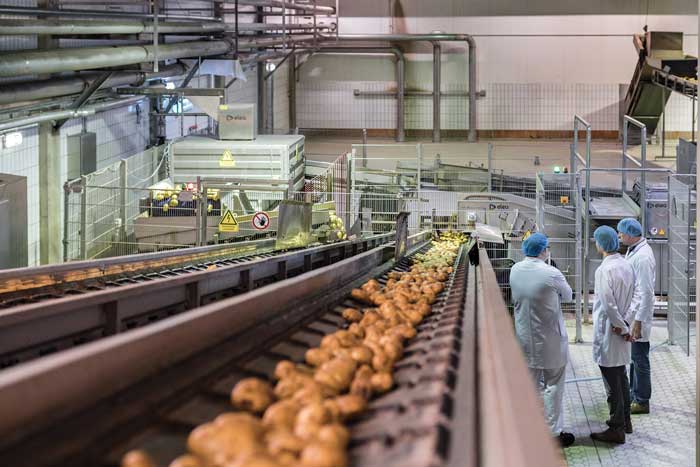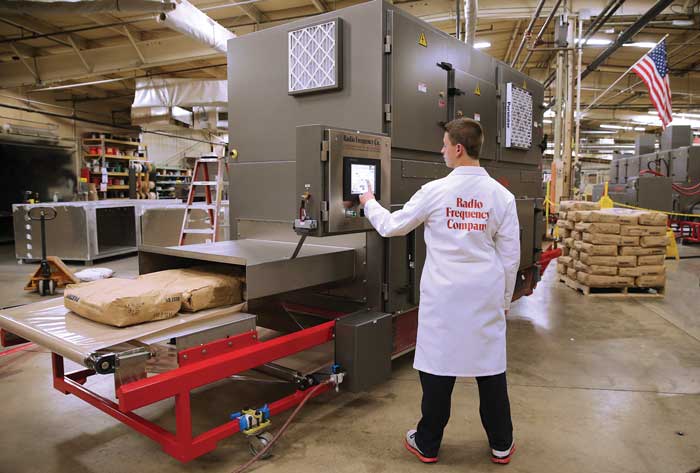Recognizing the Role of Processing in Food Safety
PROCESSING
Food processing is frequently perceived in a negative manner, as if it adversely impacts our food. This year, four Food Technology Processing columns were published to debunk this prevailing myth. The first three were titled “Sustainable Processing Solutions,” “Is Healthy Processed Food an Oxymoron?” and “Solving the Food Waste Disgrace.” These three described the important contributions of food processing toward sustainability, health, and waste reduction. This month’s Processing column will focus on the critical role that food processing plays in ensuring that our food is safe to eat. The column will provide some history and then present examples of food processing technologies and their significance for food safety.
An Historical Perspective
Foodborne illness has a very long history. Alexander the Great is believed to have contracted and died from the first known case of foodborne illness in 323 B.C. due to Salmonella typhi (typhoid fever). Later, in 1692, a toxic fungus growing on rye used for food was responsible for the Salem Witch trials—trials that took place due to the misbelief that the illness experienced was the result of witchcraft rather than foodborne illness. During the late 1800s, more than 20,000 American soldiers died during the Spanish-American war as a result of typhoid fever. Outbreaks of Streptococcus in raw milk, botulism in canned olives, and Salmonella typhi in oysters resulted in hundreds of deaths in the early 1900s. In more recent times, several outbreaks of listeriosis and salmonellosis occurred, sickening close to 200,000 people in the United States in 1985. Outbreaks due to E.coli in hamburgers and spinach, Salmonella in peanut butter, Listeria in cantaloupes, and others have occurred during the past 18 years, resulting in sickness as well as a multitude of deaths and miscarriages.
Although scientists have made great strides over the years in reducing the risk of foodborne pathogens, those risks have yet to be eliminated. Every year the Centers for Disease Control estimates that about one in six people will contract a foodborne illness. As a result, food safety remains the top concern of most food company CEOs. Food processing plays a critical role in ensuring the safety of our food supply today. Processing eliminates and/or prevents microbes from proliferating and causing disease and/or food spoilage.
eliminated. Every year the Centers for Disease Control estimates that about one in six people will contract a foodborne illness. As a result, food safety remains the top concern of most food company CEOs. Food processing plays a critical role in ensuring the safety of our food supply today. Processing eliminates and/or prevents microbes from proliferating and causing disease and/or food spoilage.
Processing Technologies Contribute to Food Safety
What follows are select examples of food processing technologies that function to improve the safety of different processed foods. These methods are not inclusive. They represent the wide array of options afforded through processing to manufacture safe processed foods. Most of the food processing methods described have been topics of previously published Processing columns.
Heat treatment remains the predominant mechanism to ensure the safety of foods, and some of the food processing technologies that are presented in this column are thermal processes. Although not a specific food processing technology, it is important to begin this discussion by mentioning one of the earliest food processing methods developed to improve the safety of foods. Pasteurization was discovered by Louis Pasteur in 1864 when he invented the process, using heat to destroy pathogens in milk and juices, making them safe for consumption.
Pasteurization is a process in which packaged and nonpackaged foods are treated with mild heat (<100°C) to eliminate pathogens and extend shelf life. Today pasteurization is used widely in the dairy industry and other food processing industries to achieve food safety. In addition to pasteurization, other traditional processes such as baking and canning are important to remember. In addition to thermal food processing technologies, a range of novel, nonthermal processing technologies are also reviewed as to their role in ensuring the safety of foods.
• Infrared Processing. Infrared processing has been used to improve the safety of rice, fruits, vegetables, and nuts through drying and thermal processing. Infrared radiation releases energy in the form of electromagnetic waves, which when present in the medium- and far-infrared regions, can be used as an efficient thermal processing method for food. Although infrared heating is not suitable for all food heating processes due to its limited penetration depth, it does offer significant advantages for processing foods for specific applications. It was the topic of the February 2015 Processing column.
• Freeze-Drying. Freeze-drying was the topic of the Processing column in February of 2018. Freeze-drying is a process by which the solvent (usually water) and/or suspension medium is crystallized at low temperature and removed by sublimation. This technology is an extremely gentle drying process that preserves the safety of a wide range of food products by lowering their water activity.
• Spray-Drying. Spray-drying is another dehydration process that preserves the safety of a wide range of pumpable foods by lowering their water activity. It was the topic of the Processing column in April of 2018. Spray-drying transforms pumpable foods from a fluid state into a dried particulate powder by spraying the feed into a hot drying medium.
 • Radio Frequency Processing. Radio frequency processing uses dielectric heating to thermally process foods using electromagnetic waves and is used to process many foods, including flour, grains, spices, and more. It is used to dry, bake, pasteurize, sterilize, and disinfect foods to improve their safety. Radio frequency processing was the topic of the August 2016 Processing column.
• Radio Frequency Processing. Radio frequency processing uses dielectric heating to thermally process foods using electromagnetic waves and is used to process many foods, including flour, grains, spices, and more. It is used to dry, bake, pasteurize, sterilize, and disinfect foods to improve their safety. Radio frequency processing was the topic of the August 2016 Processing column.
• Microwave Processing. Microwave heating is a commercial food processing technology that has been applied for cooking, drying, and tempering foods. It, like radio frequency processing, takes advantage of the dielectric properties of foods, as well as the interactions that microwaves have with them. Microwave processing was the topic of the October 2016 Processing column and is used to cook a wide range of foods. It has been used to sterilize pasta dishes, sauces, and rice dishes as well to ensure food safety.
• Electron Beam Processing. Electron beam processing was the topic of the January 2017 Processing column. It uses a low energy form of irradiation to improve food safety, destroying insects, molds, fungi, bacteria, and pathogens. Electron beam processing is currently used to treat meat, fruit, vegetables, and other foods for safety.
• Ozone. Ozone processing of foods and beverages was the topic of the Processing column in November of 2015. It has been used to disinfect bottled water since 1982 and was approved for direct contact on foods in 2001. Ozone is a powerful disinfectant that is effective in inactivating a wide range of pathogens. This nonthermal processing technology is used to improve the safety of a wide range of foods, including produce, meat, poultry, seafood, and grains.
• Pulsed Electric Field. Pulsed electric field (PEF) processing is another nonthermal process that improves food safety. It employs electroporation to penetrate biological cell membranes, resulting in cell death and inactivation of the microorganism. PEF was the topic of the Processing column in January of 2016. Today over 50 industrial-scale PEF systems are in use worldwide to treat a wide range of foods for safety, including fruit juices, fruits, and vegetables.
• Ultrasound Processing. Ultrasound processing uses acoustic cavitation to apply energy in foods and improve their safety. It was the topic of the Processing column in December 2016. Ultrasound is used to inactivate microorganisms and enzymes. It is also used for dehydration and safe thawing of foods.
• High Pressure Processing. High pressure processing is another very important food processing method to ensure the safety of foods while enhancing quality and nutritional value. This technology nonthermally squeezes water at very high pressures, inactivating microorganisms. It was the topic of the Processing column in May 2016. One critical application of high pressure processing is to treat oysters, which have been involved in several major food safety outbreaks. Today, high pressure processing is used to treat not only oysters, but also fruits, vegetables, juices, jellies, jams, meat, and chicken.
• Cold Plasma. Cold plasma is generated by energizing gases or gas mixtures with high voltage electricity or microwaves and is yet another nonthermal means to improve food safety. Its effectiveness is due to it having chemical reactions with cellular structures and its ultraviolet mediated effects on cells and DNA in the food. The March 2016 issue of Food Technology described in detail this emerging technology.
So long as illness continues to arise as a result of our food supply, food processing solutions will be needed in order to ensure our health and safety. New technologies will continue to be developed in the future to improve the safety of foods while enhancing their quality and nutritional value. It is our responsibility to ensure the safety of the food supply for current and future generations, and food processing offers critical solutions to meet this important challenge.
 Tara McHugh, PhD, Contributing Editor
Tara McHugh, PhD, Contributing Editor
Research Leader, USDA Agricultural Research Service, Albany, Calif.
[email protected]


